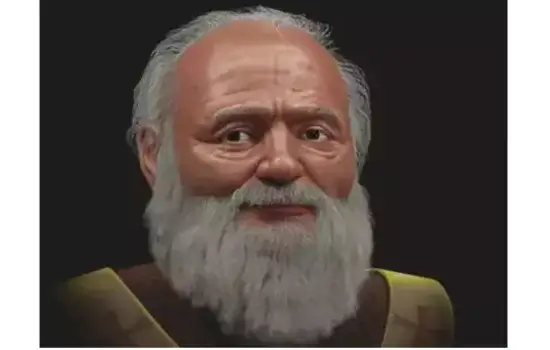Santa Claus, the beloved icon of Christmas cheer, is synonymous with a jolly, bearded man who brings gifts to children worldwide. However, the origins of Santa Claus are rooted in a historical figure—Saint Nicholas of Myra, a 4th-century Christian bishop renowned for his acts of generosity. Scientists have now used advanced forensic technology to reconstruct the face of the man who inspired this iconic legend, offering a glimpse into the true visage behind centuries of tradition.
Who Was Saint Nicholas?
Saint Nicholas served as the Bishop of Myra, in what is now modern-day Turkey, during the 4th century. Known for his selfless acts, he became a revered figure, particularly for stories of him providing dowries to save impoverished girls from servitude and aiding those in need. Over centuries, these tales evolved, with Saint Nicholas inspiring figures such as Sinterklaas in Dutch culture, eventually transforming into the global image of Santa Claus.
Despite his immense cultural impact, historical descriptions of Saint Nicholas’ physical appearance have been scarce, leaving much of his image to artistic interpretations.
Forensic Science Meets History
A team of scientists, led by Brazilian graphics expert Cicero Moraes, has utilized forensic reconstruction techniques to bring the historical Saint Nicholas to life. The study relied on data collected in the 1950s by Professor Luigi Martino, who examined Saint Nicholas’ skull and bones.
Using this data, Moraes and his team created a 3D model of the saint’s skull, which was then used as the basis for reconstructing his facial features. Advanced software and statistical projections helped outline his facial structure, while digital anatomy adjustments provided a realistic representation of his appearance.

The Face Behind the Legend
The reconstruction portrays Saint Nicholas with a robust, broad face, a wide forehead, and prominent cheekbones. His nose, described as distinctive, is thought to have been broken, possibly during his lifetime. These features align intriguingly with modern depictions of Santa Claus, especially in popular culture where Santa is often characterized as a round-faced, kind-hearted figure.
Cicero Moraes remarked that the face’s appearance is both strong and gentle, a characteristic he noted was “curiously compatible” with descriptions found in the poem “‘Twas the Night Before Christmas,” which immortalized Santa’s image in Western traditions.
Scientific and Cultural Significance
The recreation of Saint Nicholas’ face is more than just an artistic endeavor; it bridges history, science, and culture. Jos Luís Lira, a co-author of the study and a scholar of saintly lives, emphasized the importance of remembering Saint Nicholas’ enduring legacy as a figure of charity and justice. By presenting a tangible image of the saint, the reconstruction connects modern audiences with the historical figure who inspired global traditions of generosity and goodwill.
The Timeless Relevance of Saint Nicholas
As the holiday season approaches, the unveiling of Saint Nicholas’ reconstructed face adds a profound layer to the festive spirit. It serves as a reminder that the true essence of Christmas lies not in commercial festivities but in the values of kindness, sharing, and selflessness that the real Saint Nicholas embodied.
Conclusion: Bridging Myth and Reality
The scientific recreation of Saint Nicholas’ face offers a fascinating insight into the man behind one of the world’s most enduring legends. This achievement not only deepens our understanding of history but also enriches the narrative of Santa Claus, reminding us of the timeless virtues that continue to inspire joy and goodwill during the holiday season.
Santosh Kumar is a Professional SEO and Blogger, With the help of this blog he is trying to share top 10 lists, facts, entertainment news from India and all around the world.
